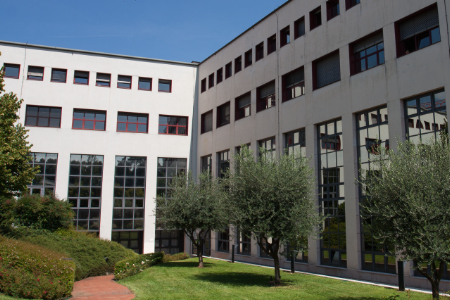- Autori:
-
Visentin, Andrea; Mauro, Francesca Romana; Scarfò, Lydia; Gentile, Massimo; Farina, Lucia; Reda, Gianluigi; Ferrarini, Isacco; Proietti, Giulia; Derenzini, Enrico; Cibien, Francesca; Vitale, Candida; Sanna, Alessandro; Pietrasanta, Daniela; Marchetti, Monia; Murru, Roberta; Rigolin, Gian Matteo; Sportoletti, Paolo; Trimarco, Valentina; Cavarretta, Chiara Adele; Angotzi, Francesco; Cellini, Alessandro; Ruocco, Valeria; Zatta, Ivan; Laurenti, Luca; Molica, Stefano; Coscia, Marta; Ghia, Paolo; Foà, Robin; Cuneo, Antonio; Trentin, Livio
- Titolo:
-
Continuous venetoclax in treatment-naive TP53 disrupted patients with chronic lymphocytic leukemia: A chronic lymphocytic leukemia campus study
- Anno:
-
2023
- Tipologia prodotto:
-
Articolo in Rivista
- Tipologia ANVUR:
- Articolo su rivista
- Lingua:
-
Inglese
- Referee:
-
No
- Nome rivista:
- American Journal of Hematology
- ISSN Rivista:
- 0361-8609
- N° Volume:
-
98
- Numero o Fascicolo:
-
9
- Intervallo pagine:
-
237-240
- Parole chiave:
-
venetoclax, chronic lymphocytic leukemia, TP53
- Breve descrizione dei contenuti:
- Deletion of 17p13 (17p-) and/or TP53 gene mutation (TP53m), collectively defined as TP53 abnormalities (TP53 abn), can be found in 8 to 10% of treatment-naive (TN) patients with chronic lymphocytic leukemia (CLL) and in up to 50% of relapsed/refractory cases.1 In CLL TP53 disruption is a negative prognostic and predictive biomarker, associated with shorter time to first treatment, karyotype complexity, Richter transformation as well as shorter survival.2, 3 In addition, this adverse genetic feature has been associated with an increased risk of treatment failure in patients treated with continuous BTK inhibitors (BTKi).4, 5
Fixed duration venetoclax-based therapy, in combination with anti-CD20 monoclonal antibody, is a highly active treatment for TN and relapsed/refractory patients with CLL.6, 7 However, patients with TP53 abnormalities display shorter measurable residual disease (MRD) doubling time and early relapse after the end of treatment.6, 7 Continuous treatment with BTKi is a valid option in TP53 disrupted patients, counteracted by a relatively high rate of discontinuation due to adverse events,8, 9 beside second-generation BTK are better tolerated than ibrutinib. In the phase II study investigating venetoclax in TP53-disrupted patients with CLL, only five patients were TN, and 4/5 were remission-free after a median follow-up of 2 years.10
The aim of this study is to describe the efficacy and discontinuation rate of continuous venetoclax in TN CLL patients with TP53 disruption.
- Id prodotto:
-
141586
- Handle IRIS:
-
11562/1141706
- ultima modifica:
-
25 ottobre 2024
- Citazione bibliografica:
-
Visentin, Andrea; Mauro, Francesca Romana; Scarfò, Lydia; Gentile, Massimo; Farina, Lucia; Reda, Gianluigi; Ferrarini, Isacco; Proietti, Giulia; Derenzini, Enrico; Cibien, Francesca; Vitale, Candida; Sanna, Alessandro; Pietrasanta, Daniela; Marchetti, Monia; Murru, Roberta; Rigolin, Gian Matteo; Sportoletti, Paolo; Trimarco, Valentina; Cavarretta, Chiara Adele; Angotzi, Francesco; Cellini, Alessandro; Ruocco, Valeria; Zatta, Ivan; Laurenti, Luca; Molica, Stefano; Coscia, Marta; Ghia, Paolo; Foà, Robin; Cuneo, Antonio; Trentin, Livio,
Continuous venetoclax in treatment-naive TP53 disrupted patients with chronic lymphocytic leukemia: A chronic lymphocytic leukemia campus study
«American Journal of Hematology»
, vol.
98
, n.
9
,
2023
,
pp. 237-240
Consulta la scheda completa presente nel
repository istituzionale della Ricerca di Ateneo 








